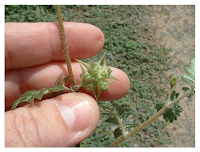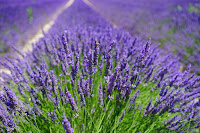These snakes live in our area and they are a beneficial predator. Gopher snakes are muscular, long serpents that can be intimidating because of their size; however, but there’s little to fear because they are nonvenomous. In fact, they are important to keeping the rodent population in check and maintaining their local ecosystems.
Physical characteristics
Gopher snakes are large, powerful snakes and typically reach lengths of 36-96 inches [3 to 8 feet]. Compared to other snakes of the same size, they have relatively large eyes with large, distinct heads with narrow necks. They often have two dark lines on their faces that go from the top of their head around either side of their eyes. Gopher snakes’ coloring can depend on their subspecies and location. Often their colors blend in with local vegetation. They range from cream to light brown and have dark blotches on their backs and smaller dark spots along their sides. They generally have light-colored bellies, sometimes with spots.Gopher snakes are sexually alike, with both males and females being around the same size. They have keeled (ridged) scales.
One way to check if a snake is nonvenomous is by the shape of their eyes. Round eyes and a head shaped like this one pictured are the norm.
Dietary and hunting habits
“Gopher snakes are nonvenomous constrictors. This means that they squeeze their prey to death. There are some common misconceptions about how constricting works. One is that constrictors crush or break the bones of their prey. Another is that they suffocate it, squeezing the prey’s lungs too tightly to work. “It turns out that the squeezing overwhelms the circulatory system. “Blood cannot get to the brain, and the animal dies within seconds due to ischemia.”Gopher snakes feed on small mammals, birds, bird eggs, lizards and of course gophers. They actively seek out prey and often follow small mammals down their runways or burrows.
Reproduction and lifespan
Gopher snakes mate during July and August. It is the only time of year they socialize. Females emit a chemical through their skin that draws males to them and stimulates mating behaviors. Males will mate with as many females as they can each year. Males sometimes engage in ritualistic wrestling for the female.Gopher snakes are oviparous, meaning they lay eggs. Females sometimes lay two batches (called clutches) of eggs per season. Eggs incubate in nests, which are sometimes communal with other gopher snakes. After a 65-75 day incubation period, 2 to 24 young hatch and are instantly independent. Gopher snakes have no parental involvement after laying eggs. Babies are born 12-18 inches (30 to 45 cm) long and can be up to 3 feet (92 cm) long after one year.
Female gopher snakes reach sexual maturity between 3 and 5 years of age. Males reach it between 1 and 2 years of age. In the wild, they live up to 15 years. They have been known to live up to 33 years in captivity.
Range/ Habitat
The gopher
snake is one of the most widespread snakes in North America. Its range extends
from the Atlantic to Pacific oceans, as far north as southern Canada, and as
far south as Veracruz and southern Sinaloa, Mexico, including Baja California. This
species occurs in a lot of different habitats, including prairies, conifer
forests and deserts, but it seems most common in semi-arid brushy areas
adjacent to farms. Gopher snakes tend to spend about 90% of their time living
in underground dens or burrows and they probable hibernate there during the
cold months. When it is warm out, we tend to see them sunning themselves on
roadways and dirt lots, but give them space so they can do what they do best.
Happy Gopher Snake Day.
Taxonomy/classification
The taxonomy of the gopher snake, Kingdom: Animalia
Kingdom: AnimaliaSubkingdom: Bilateria
Infrakingdom: Deuterostomia
Phylum: Chordata
Subphylum: Vertebrata
Infraphylum: Gnathostomata
Superclass: Tetrapoda
Class: Reptilia
Order: Squamata
Suborder: Serpentes
Infraorder: Alethinophidia
Family: Colubridae
Genus & species: Pituophis catenifer











.jpg)







